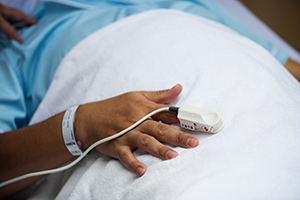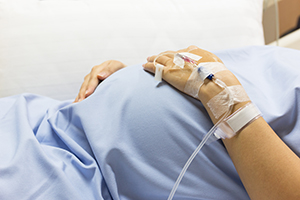November 2022 News Roundup
This month features cath lab burnout, pulse oximeters and skin tone, a pregnant woman’s acute PE during labor, and more.

Every month, Section Editor L.A. McKeown curates a roundup of recent news tidbits from journals and medical meetings around the globe.
Variability in practice across institutions and individual operators with regard to cardiogenic shock care may be largely responsible for adverse outcomes. In a new position statement published in JACC: Cardiovascular Interventions, experts argue that vascular access/closure techniques for large-bore percutaneous mechanical circulatory support devices and approaches to cardiac critical care management should be standardized by adopting a minimum core set of process elements, or “vascular safety bundles.”
 A small study of registered nurses and cardiac invasive specialists suggests that those working in the cardiac catheterization/electrophysiology lab are more apt to experience burnout than those who work on cardiac observation units. Writing in Cardiology Research, investigators say organizational changes are needed in some cath labs to reduce burnout among staff and enhance mental well-being, since “failure to do so has negative implications for patients and hospital organizations.”
A small study of registered nurses and cardiac invasive specialists suggests that those working in the cardiac catheterization/electrophysiology lab are more apt to experience burnout than those who work on cardiac observation units. Writing in Cardiology Research, investigators say organizational changes are needed in some cath labs to reduce burnout among staff and enhance mental well-being, since “failure to do so has negative implications for patients and hospital organizations.”
Compared with white patients presenting with ACS, those with the condition who are Hispanic or Black are younger and have higher cardiometabolic comorbidities, according to an contemporary analysis of nearly 2 million hospital discharges published in JSCAI. Hispanic patients had the highest total hospital costs of all groups despite having fewer social determinants of health than white patients. The revascularization rate was lowest in Black patients.
Early research suggests it may be possible to reprogram human cardiomyocyte cells to restore electrical signals that enable synchronized contraction and relaxation of the heart. In an article published in iScience, investigators say such revolutionary cell therapy could one day be used to combat myocardial cell death and fibrotic scar formation, two major contributors to heart failure.
 Following a safety communication last year to inform the public and healthcare providers of the limitations of pulse oximeters, the US Food and Drug Administration this month held a panel meeting and issued an executive summary. In it, the agency explains its ongoing concerns that the devices are not accurate across all skin pigmentations and reviews adverse events that have been reported in real-world patients due to the inaccuracies.
Following a safety communication last year to inform the public and healthcare providers of the limitations of pulse oximeters, the US Food and Drug Administration this month held a panel meeting and issued an executive summary. In it, the agency explains its ongoing concerns that the devices are not accurate across all skin pigmentations and reviews adverse events that have been reported in real-world patients due to the inaccuracies.
Patients over the age of 80 admitted to non-cath-lab hospitals with non-ST-elevation acute coronary syndromes (NSTE ACS) may reap survival benefits from transfer to PCI-capable hospitals. An Italian study of all-comers published in the Journal of Clinical Medicine found that 1-year survival was nearly doubled when a transfer for same-day revascularization was chosen over a conservative strategy (94% vs 54%; P < 0.001).
 A 37-year-old pregnant woman in labor was found to have acute bilateral pulmonary embolism. In JACC: Case Reports, the team who treated her explain the complicated case, which included the delivery of a healthy baby in the cardiac OR while the patient slipped into shock. Pulmonary thrombus were removed via percutaneous embolectomy, and after 24 days in the hospital, the woman was discharged home.
A 37-year-old pregnant woman in labor was found to have acute bilateral pulmonary embolism. In JACC: Case Reports, the team who treated her explain the complicated case, which included the delivery of a healthy baby in the cardiac OR while the patient slipped into shock. Pulmonary thrombus were removed via percutaneous embolectomy, and after 24 days in the hospital, the woman was discharged home.
The American Medical Association (AMA)’s House of Delegates has passed AMA Resolution 911, which calls for regional or national guidelines to standardize prehospital and inpatient care for cardiac emergencies. Under the resolution, hospitals would be designated as Emergency Cardiac Care centers based on their ability to provide care for STEMI with or without cardiogenic shock and out-of-hospital cardiac arrest.
In a study of more than 1,600 COVID-19 patients hospitalized with community-acquired pneumonia, development of CV complications was the primary driver of mortality, according to data published in Chest. CV complications were seen in 18% of these patients, with a mortality rate of 45%. By comparison, the death rate was 13% in those who did not develop a CV complication.
L.A. McKeown is a Senior Medical Journalist for TCTMD, the Section Editor of CV Team Forum, and Senior Medical…
Read Full Bio


Comments